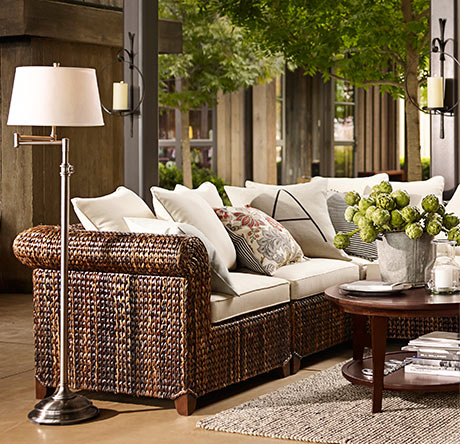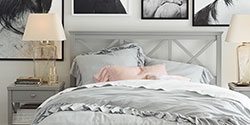Get Light Right

-
1 Power Up
To find the ideal wattage needed, multiply a room's square footage by 1.5 to find overall wattage needed. To properly illuminate a kitchen or home office where brighter light is called for, multiply the room's square footage by 2.5. That sum equals the overall wattage needed in the room.
-

-

-
2 Hang It Right
For the standard 8-foot ceiling, hang your chandelier so that the bottom of the fixture falls 30 to 34 inches above your dining table. Add the length and width of your room in feet, then use the same number, but in inches, to determine the best size chandelier diameter for your space.
-
3 Get the Proper Shade
For maximum versatility, supplement overhead lighting with a mix of task lamps that truly help you get the job done. Position bedside lamps so that the bottoms of the lampshades sit just below eye level, or 16 to 18 inches from the top of the mattress.
-

-

-
4 Sconce 101
Mount sconces 60 to 66 inches high from the floor for a standard 8- to 9-foot ceiling. For spaces with high ceilings (12 feet or more), sconces should be placed no lower than 7 feet from the floor.
-
5 Work Smart
For a standard 8-foot ceiling, hang pendants so the bottom of the fixture falls 30 to 34 inches above your desk or project table. Pendants in multiples are ideal for illuminating elongated surfaces, like kitchen islands.
-

-

-
6 Mix It Up
For flexibility in a larger living room, be sure to include a variety of light sources such as flushmounts, table lamps and lanterns. Floor lamps are a great space-saving option that provide ample light and add scale to a room.
-
7 Enlist an Expert
-
Want to shed new light on your home but not sure where to start? We can help with our free interior design services. Find how-to articles, videos and tools online, call us for on-the-spot advice, or set up an appointment with a Design Studio Specialist at your local store or in your home.


